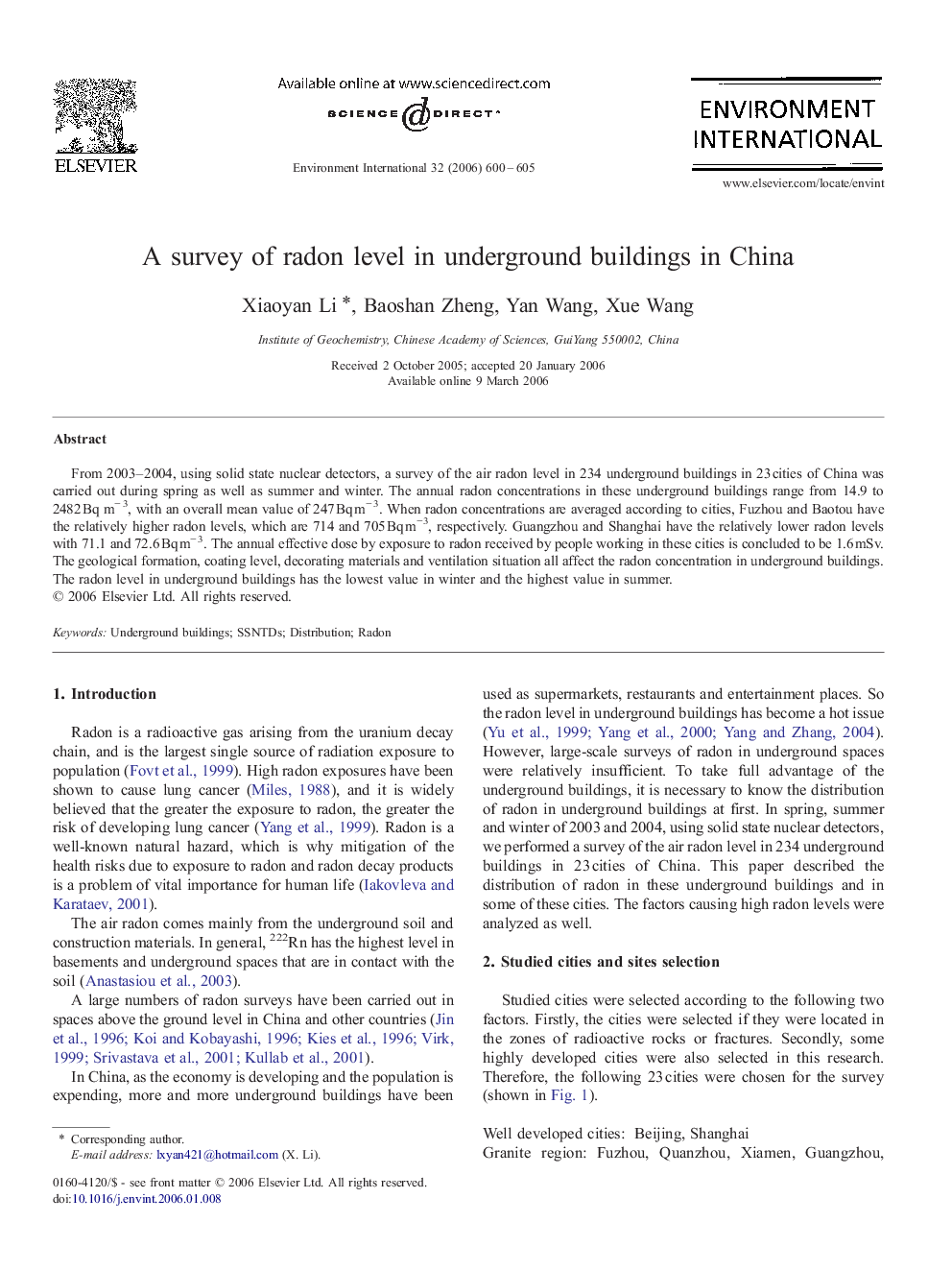| Article ID | Journal | Published Year | Pages | File Type |
|---|---|---|---|---|
| 4423943 | Environment International | 2006 | 6 Pages |
From 2003–2004, using solid state nuclear detectors, a survey of the air radon level in 234 underground buildings in 23 cities of China was carried out during spring as well as summer and winter. The annual radon concentrations in these underground buildings range from 14.9 to 2482 Bq m− 3, with an overall mean value of 247 Bq m− 3. When radon concentrations are averaged according to cities, Fuzhou and Baotou have the relatively higher radon levels, which are 714 and 705 Bq m−3, respectively. Guangzhou and Shanghai have the relatively lower radon levels with 71.1 and 72.6 Bq m− 3. The annual effective dose by exposure to radon received by people working in these cities is concluded to be 1.6 mSv. The geological formation, coating level, decorating materials and ventilation situation all affect the radon concentration in underground buildings. The radon level in underground buildings has the lowest value in winter and the highest value in summer.
